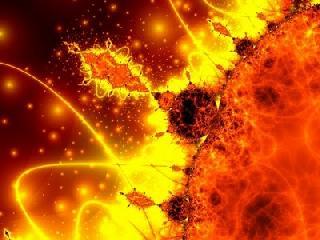
LONDON (PTI): The intensity of solar storms is expected to peak in 2013 and may devastate critical infrastructure like satellite communications, navigation systems and electrical transmission equipment, a top scientist has warned.
Kathryn Sullivan, assistant secretary of the US National Oceanic and Atmospheric Administration, said countries should prepare for "potentially devastating effects" from solar storms which are caused by massive explosions on the Sun.
Solar storms, according to scientists, release particles that can temporarily disable or permanently destroy fragile computer circuits, the Daily Mail reported.
Dr Sullivan, a former NASA astronaut who in 1984 became the first woman to walk in space, told a UN weather conference in Geneva that "it is not a question of if, but really a matter of when a major solar event could hit our planet".
She is not the only expert to issue a warning about the threat posed by solar storms.
In February, astronomers warned that mankind is now more vulnerable to such an event than at any time in history -- and that the planet should prepare for a global Hurricane Katrina-style disaster.
A massive solar eruption, they said, would send waves of radiation and charged particles to Earth, damaging satellite systems used for synchronising computers, airline navigation and phone networks.
If the storm is powerful enough it could even crash stock markets and cause power cuts that last weeks or months, experts told the American Association for the Advancement of Science.
The chances of a disruption from space are getting stronger because the Sun is entering the most active period of its 11 to 12-year natural cycle.
The world witnessed the Sun's explosive power in February when the strongest solar eruption in five years sent a torrent of charged plasma hurtling towards the world at 580 miles per second. The storm created spectacular aurorae and disrupted radio communications.
Space storms are not new. The first major solar flare was recorded by British astronomer Richard Carrington in 1859.
Other solar geomagnetic storms have been observed in recent decades. According to NASA, one huge solar flare in 1972 cut off long-distance telephone communication in the mid-western state of Illinois.
Another similar flare in 1989 'provoked geomagnetic storms that disrupted electric power transmission' and caused blackouts across the Canadian province of Quebec, the US space agency said.
 Previous Article
Previous Article














The Indian Air Force, in its flight trials evaluation report submitted before the Defence Ministry l..
view articleAn insight into the Medium Multi-Role Combat Aircraft competition...
view articleSky enthusiasts can now spot the International Space Station (ISS) commanded by Indian-American astr..
view article